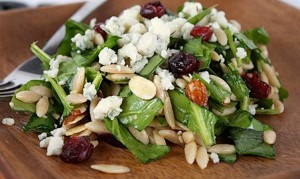Get Ready for the World Cup!
If you are a soccer fan, you know that the World Cup will be held this coming year in Brazil. The 2014 FIFA World Cup will be the 20th FIFA World Cup, an international men’s football tournament scheduled to take place in Brazil from June 12 to July 13, 2014.

It will be the second time that Brazil has hosted the competition, the previous being in 1950. Brazil will become the fifth country to have hosted the World Cup twice, after Mexico, Italy, France, and Germany. The sale of tickets for the World Cup started on August 20, 2013, and an estimated 3.3 million tickets will be available and will be sold through FIFA’s website.
If you are one of those lucky enough to have your tickets already to the World Cup but don’t have your accommodations taken care of, allow us to help!
The magnificent city of Rio de Janeiro has many wonderful sights to see. And of course, one of the most famous is Sugarloaf. By traveling up Urca Hill to Sugarloaf via cable car, you will be able to take in the beautiful view of Guanabara Bay and its islands.
Sugarloaf Mountain is a peak situated in Rio de Janeiro, at the mouth of Guanabara Bay on a peninsula that juts out into the Atlantic Ocean. At night this area looks very beautiful. After visiting Sugarloaf, you will want to ride by train to the top of Corcovado Mountain (corcovado translates to “hunchback,” due to the mountain’s shape) to view the Christ the Redeemer statue, located 2,328 feet above sea level, and the panoramic view of Rio de Janeiro. Truly an awesome sight to behold.
There are three ways to reach the top: by cogwheel train, by minibus, or on foot (not recommended without a guide for safety reasons). The train, built in 1885, provides delightful views of Ipanema and Leblon—Rio de Janiero’s most affluent areas—from an absurd angle of ascent, as well as a close look at thick vegetation and butterflies.
Anyone visiting Rio will have to visit the much talked about beach, Ipanema. Back in the 60s when Americans were first introduced to the sound of Bossa Nova, the beach of Ipanema also gained fame, primarily by the song “The Girl from Ipanema” by Antonio Carlos Jobim and Vinicius de Moraes. Today, Ipanema is known for its elegance and social qualities.
At the forefront of the beach culture are the many surfers and sun worshippers who socialize daily at the beach. Every Sunday, the roadway closest to the beach is closed to motor vehicles; local residents and tourists use the opportunity to ride bikes, roller skate, skateboard, and walk along the ocean.
Ipanema is adjacent to Copacabana and Leblon Beach, but it is distinct from its neighbor. It is relatively easy to navigate because the streets are aligned in a grid. Private infrastructure has created world-class restaurants, shops, and cafes. This area is one of the most expensive places to live in Rio.
Another well known beach is Leblon. Located west of Ipanema, Leblon is bordered by Gavea to the north and a towering hill to the west called Dois Irmãos, which translates to “two brothers” because of its split peak. Leblon is similar to Ipanema but is even more exclusive, being the home of the rich and famous. The beach is quieter and more relaxed than the hip and trendy beach of Ipanema.
While you’re in Brazil enjoying the World Cup, you will undoubtedly enjoy and savor many of the traditional foods of the area. Brazil boasts a wide-ranging ethnic heritage that combines native Amerindian, Portuguese, African, Italian, Spanish, German, Polish, Syrian, Lebanese, Japanese, and other cultures. The diversity makes for a delicious cuisine that varies regionally. The constant food group is rice—which Brazilians eat almost daily—mixed with onion, garlic, and seafood. When you find yourself in the capital of Rio de Janeiro, located in the southeast, order the churrasco, grilled meats on large skewers, for which the area is renowned.
A popular street food is acaraje. This delicious treat is a black-eyed pea ball fried in palm oil, usually stuffed with shrimp and vinaigrette. You might also enjoy little raindrops of fried goodness, usually filled with chicken and a very creamy cheese called “catupiry.” It tastes like a fried mac ‘n’ cheese ball, sans noodles, plus chicken. Yum!
While it might look like all Brazilian food is fried, it’s not. There is a wide variety of food in Brazil; therefore, you can easily find healthy options on the menu because much of the cuisine is based in vegetables and fruits like indigenous cassava, yams, mango, papaya, and guava.
But if you can’t make it to the World Cup, there’s always Carnival, right? Rio Carnival is a wild 5-day celebration, forty days before Easter. This year, the celebration officially starts on February 28 and concludes on Fat Tuesday, as the following day is the beginning of Lent on Ash Wednesday (after which one is supposed to abstain from all bodily pleasures). It’s best to always plan a visit to Rio during Carnival 6 months in advance to ensure you have a place to stay.
Needless to say, there is much more to see in Rio than can be covered in this short blog. Joanie and I have a wonderful contact person to make this a visit you will never forget for all the right reasons and without the hassle. Feel free to contact us for reservations to one of the most exciting cities in the world.
Related Posts
« The Modern Gladiator Man—Being Refined by Fire! 4 Simple Keys for a Stronger, Sexier, and Happier 2014 »




















